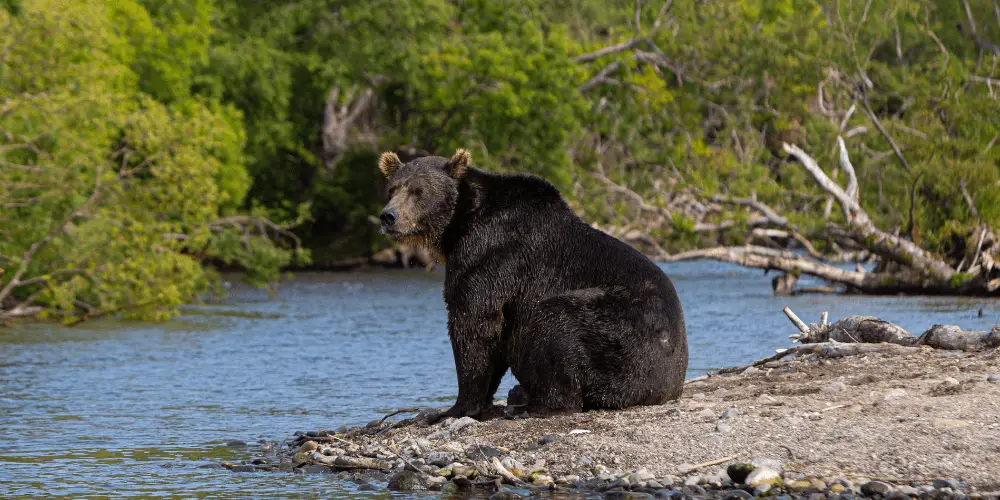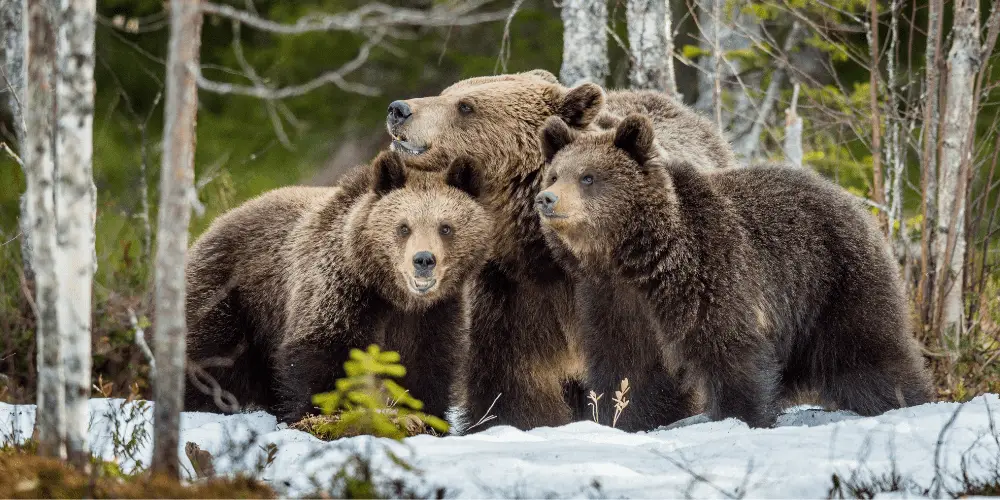Many land-based mammals can swim, even if they’re big, heavy, and look like they should just sink if they hit the water. This begs the question- can bears swim?
Every species of bear can swim by the time they reach adulthood. Bears have a high level of fat content coupled with an oily coat of fur, which aids them to stay afloat. They can effortlessly keep their heads above water while using minimal energy to maneuver.
Biological Reasons Why Bears Can Swim
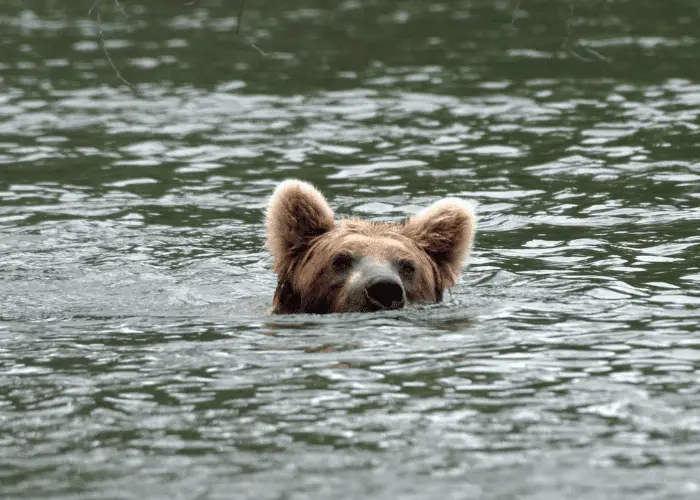
When it comes to biology, bears have a couple of things going for them in terms of swimming.
As mentioned above, Between the thick layer of fat and their oily fur, they have no problem keeping their heads above water. They are most comfortable swimming with a doggie paddle style and can fully submerge themselves at will.
All groups of bears can swim, but out of them all, the Polar Bear is regarded as the best swimmer. Not only are they high in fat content and dawning an oily coat, but they also have webbed paws that assist in propulsion.
How Far Can Bears Swim?
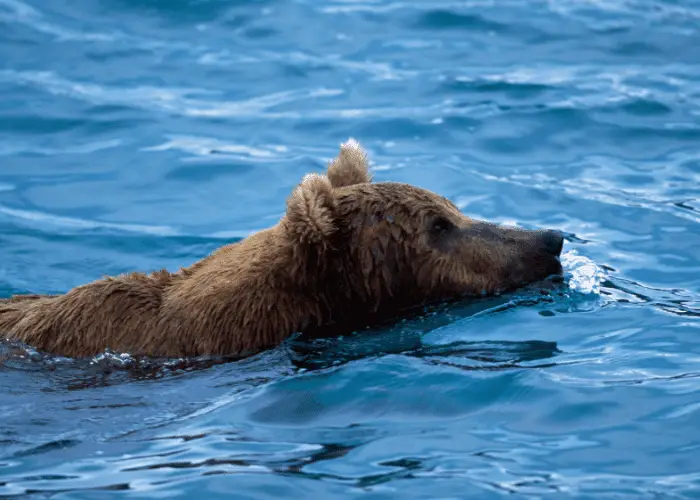
The three best-known swimmers in the bear family are the Polar, Black, and Brown (or Grizzly) bears.
Brown Bears
Brown bears rarely have any need to go for any long-distance swims in their natural habitat. Generally, they’ve been known to paddle their way up a mile’s distance.
Black Bears
Because Black Bears can be found all over the place, they’re more likely to be in areas where a long-distance swim may become warranted. In some places, Black Bears have been recorded swimming up to about 9 miles in one swim.
Polar Bears
When you live on melting ice, long-distance swimming isn’t only a frequent event but also a means of survival. Unlike other bears, Polar Bears are more accustomed and better equipped to go for the long haul.
For the Polar Bear, a swim that breaches 30 miles is not uncommon. Though the longest swim recorded for the Polar Bear was 220 miles, the average distance swam by Polar Bears wearing tracking collars was about 96 miles.
These long swims do not come without their hazards…
The Polar Bear is known as the most enormous and fierce of all bears outside the water. However, the hunter can become the hunted, as some remains of Polar Bears have been found in large sharks patrolling the frigid northern waters- Greenland Sharks in particular.
Can Bears Swim Underwater?
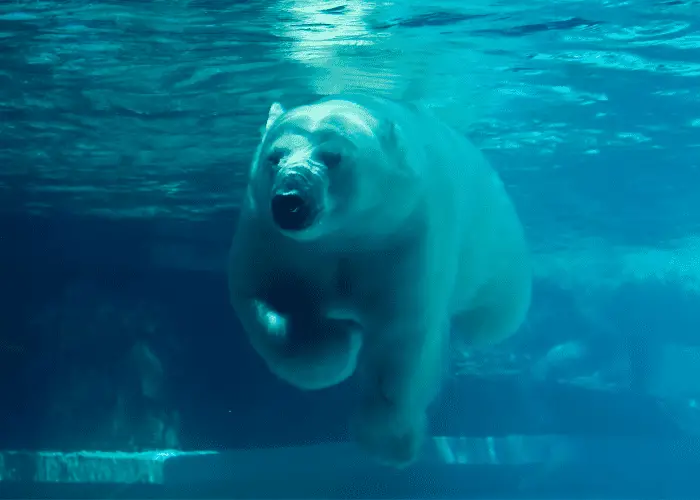
Bears can swim underwater. But for all but the Polar Bear, it is for short periods and not too deep. Even the Polar Bear, classified as a marine mammal, only dives about 10-13 feet deep.
Some species of bear can hold their breath for up to a minute, and some even longer. Polar Bears will hold their breath for up to three minutes if it has to.
They can swim underwater, but it isn’t necessarily to fish. If a bear were to see a fish or other form of prey from a bank, it would jump in on the target with hopes of nabbing it by surprise.
But if they’re already swimming, they won’t be fishing. A bear loses a few weapons underwater- their sense of smell and sight.
They can see underwater, but how they see is much like us with eyes open without the benefits of a diving mask- a blurry version of what’s there.
Why Do Bears Swim?
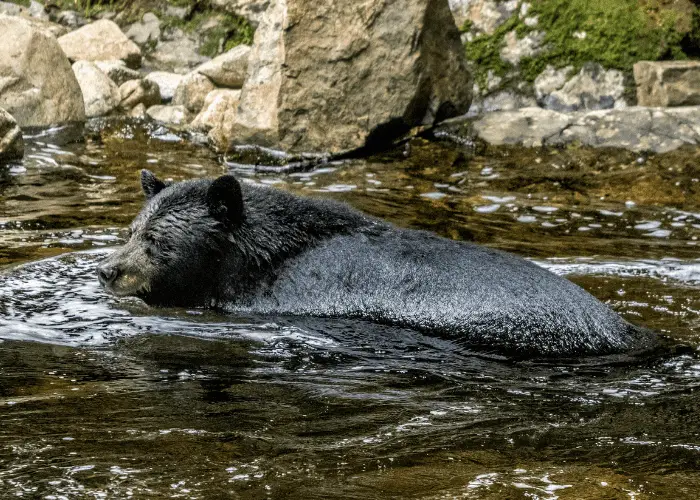
There are a lot of animals out there that take to the water only if they have to. They are happy to stay on land, and having to cross a river, or any other body of water is more of a nuisance than anything. The same can’t be said about bears.
Bears have three primary reasons why they decide to take to the water.
1. Bears Eat Fish
If you’re not a human, there’s only one way to catch a good fish meal: to get in the water and go after it.
Now, some bears are crafty with the terrain and can catch fish that attempt to jump up a short waterfall by snatching them out of the air. But for the most part, they get in the water and get their meal when fish is on the menu.
Though most bears tend to do their fishing in the shallows of a river, pond, or lake, they will jump in after a target if they have a good vantage point.
2. Bears Crossing Bodies of Water
When fishing isn’t as plentiful, and they have other plans with an island somewhere in the middle of a large lake, they’ll take to the water to make swim to their target. The bear that is the most famous for its swimming is the Polar Bear.
As mentioned above, the Polar Bear can swim extremely long distances across the sea to reach a destination. Its hope will be a safe place to eat, hunker down, and live- even if it’s just for a little while.
3. Bears Enjoy Playing in the Water
As some animals find water to be entered on an “as needed” basis, some, in this case, bears, like to jump in and play around for a while simply. Water can be a great source of playtime for adult bears and a good opportunity for cubs coming of age to start learning how to swim.
Can Bears Swim Faster than Humans?
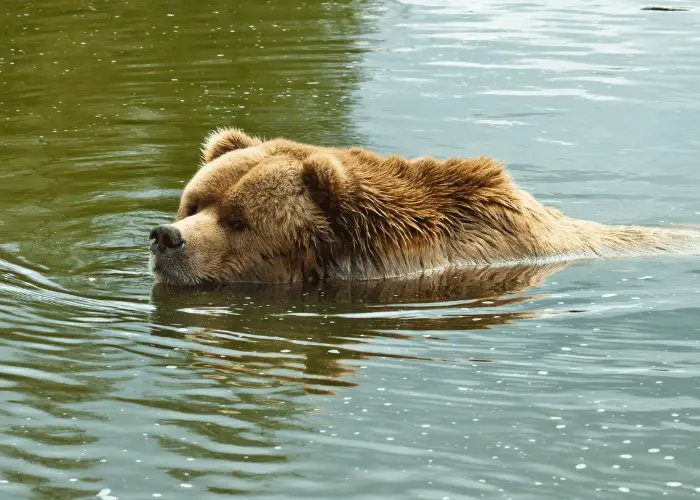
If your plan of escape, if ever chased by a bear, is via taking to water, think again. Bears swim twice as fast as the average human swimmer, about 6 mph.
Physically, bears outclass humans in any natural setting. They can run faster, climb trees better and quicker, they’re manifold stronger and can swim faster. Not just that, they can outlast any human swimmer (especially Polar Bears) and maintain a good speed throughout the swim.
Final Thoughts

Bears can do just about anything we can do in the wild- except they do it far better in every way. They have all the tools at their disposal to do what they want, go where they need to, and do it with as little effort as possible.
Thick forests, icy islands adrift at sea, rugged mountainsides, swamps, and even oceans, lakes, ponds, and rivers, bears can (and do) find a way to manage.
WHAT DO YOU THINK: How Fast Can Bears Run?

